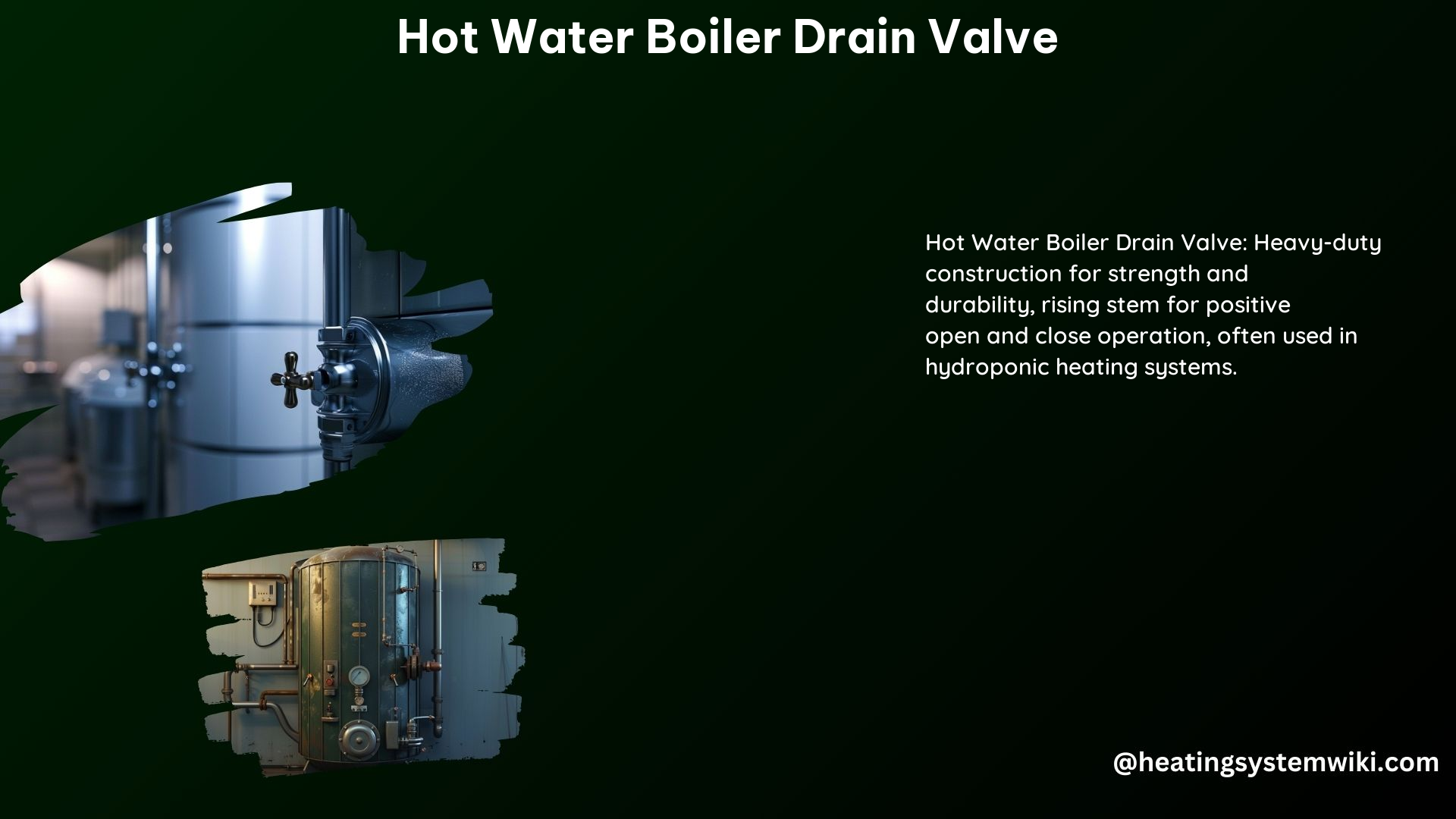A hot water boiler drain valve is a crucial component in a heating system that allows for the drainage of water, sediment, and waste from the boiler. This valve is typically located at the bottom of the boiler and is designed to facilitate maintenance and cleaning of the boiler by releasing any accumulated debris.
Purpose of a Hot Water Boiler Drain Valve
The primary purpose of a hot water boiler drain valve is to:
-
Remove Sediment and Waste: The valve allows for the drainage of sediment, rust, and other impurities that can accumulate at the bottom of the boiler, ensuring the boiler operates efficiently and safely. Over time, these deposits can reduce the boiler’s heat transfer efficiency, leading to increased energy consumption and potential damage to the system.
-
Prevent Corrosion: By draining water and sediment, the valve helps prevent corrosion within the boiler, extending its lifespan. Corrosion can weaken the boiler’s structural integrity and lead to leaks, which can be costly to repair.
-
Facilitate Maintenance: The valve provides an easy way to drain the boiler for routine maintenance, such as cleaning and inspecting the system. This allows homeowners or HVAC technicians to thoroughly clean the boiler, removing any buildup and ensuring optimal performance.
Technical Specifications of Hot Water Boiler Drain Valves

Hot water boiler drain valves typically have the following specifications:
-
Material: Valves are often made of brass, stainless steel, or other corrosion-resistant materials to withstand high temperatures and water pressure. Brass valves are a popular choice due to their durability and resistance to corrosion, while stainless steel valves offer enhanced strength and longevity.
-
Size: Valves come in various sizes, such as 3/4″ MIP (Male Iron Pipe) or 1″ MIP, to fit different boiler configurations. The size of the valve should match the boiler’s drain port to ensure a secure and leak-free connection.
-
Thread Type: Valves often have a male NPT (National Pipe Taper) thread for easy connection to a garden hose or other drainage systems. This allows homeowners to easily attach a hose and drain the boiler’s contents.
-
Handle Type: Handles can be T-handle, lever handle, or other designs for easy operation. T-handles are a common choice as they provide a sturdy grip and allow for quick and effortless valve opening and closing.
-
Pressure Rating: Valves are designed to withstand the pressure of the boiler system, typically up to 150 psi. This ensures the valve can safely handle the high-pressure environment within the boiler without the risk of failure or leaks.
Replacing a Leaking Hot Water Boiler Drain Valve
To replace a leaking hot water boiler drain valve, follow these steps:
-
Turn Off the Boiler: Ensure the boiler is turned off and the system is depressurized before starting the replacement process. This is crucial for safety and to prevent any scalding hot water from being released during the valve replacement.
-
Drain the Boiler: Use the existing valve to drain the boiler completely. This will allow you to work on the valve without any water or pressure in the system.
-
Disconnect the Valve: Remove any connections to the valve, such as the garden hose. This may involve unscrewing the hose or any other fittings attached to the valve.
-
Remove the Old Valve: Take out the old valve, being careful not to damage surrounding components. You may need to use a wrench or pliers to loosen the valve, depending on its size and accessibility.
-
Install the New Valve: Mount the new valve, ensuring proper alignment and secure connections. Apply thread tape or pipe dope to the new valve’s threads to create a watertight seal.
-
Reconnect and Test: Reconnect the garden hose or any other fittings, and test the valve to ensure it is functioning properly and not leaking. Turn the boiler back on and check for any signs of leaks around the new valve.
DIY Tips
-
Shut off the power and water supply to the boiler before starting the replacement process. This will prevent any accidental activation of the boiler and ensure your safety during the valve replacement.
-
Use a bucket to catch any spilled water when draining the boiler. This will help minimize the mess and potential water damage to the surrounding area.
-
Apply thread tape or pipe dope to the new valve’s threads for a secure connection. This will help prevent leaks and ensure a tight seal between the valve and the boiler’s drain port.
-
Test the valve regularly to ensure it is functioning correctly and not leaking. This can be done by opening and closing the valve and checking for any signs of water seepage.
